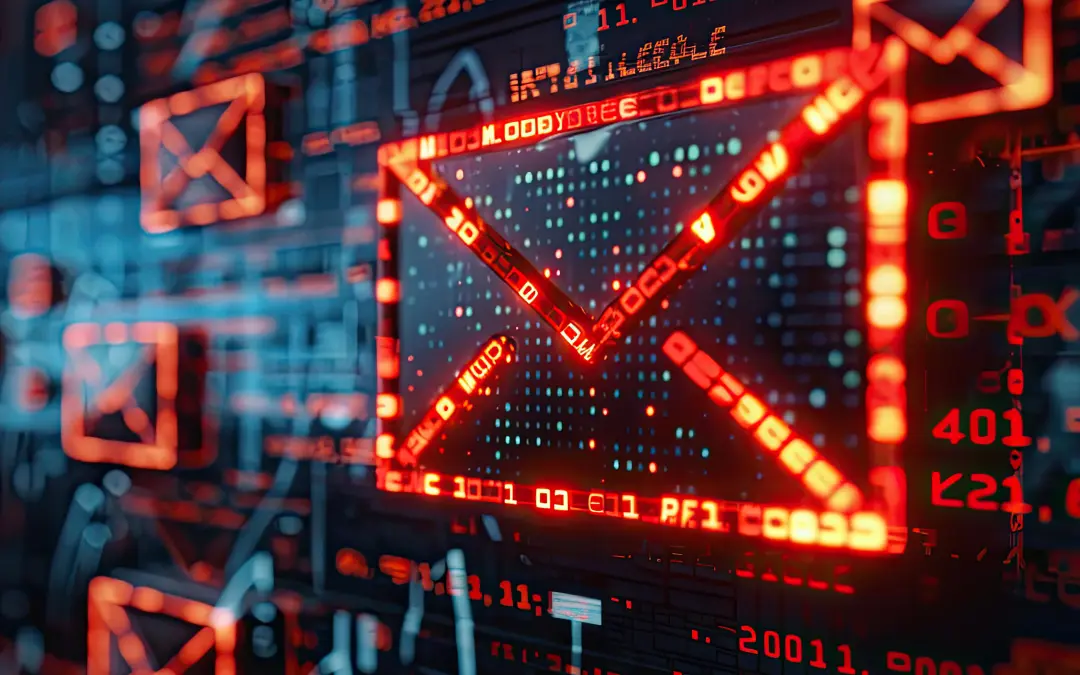What is Email Encryption?
Email is the backbone of modern business communication—but it’s also a prime target for cybercriminals. With malware attacks up 28.49%, sensitive information is at greater risk than ever. Email encryption tackles this challenge by transforming readable messages into unreadable code that only authorized recipients can decrypt. This process creates a secure channel that keeps your communications safe from interception and helps you maintain compliance in a risky digital world.
Olivia Pramas
July 15, 2025

What is email encryption?
Email encryption converts plaintext messages into ciphertext using cryptographic algorithms. This ensures that only recipients with the proper decryption key can access the original content. The sender’s system encrypts the message before it’s transmitted, and the recipient’s system decrypts it upon receipt. This creates a secure communication channel, even over untrusted networks like the internet.
There are two, primary approaches for email encryption:
- Transport layer security (TLS) protects messages during transmission between email servers, which ensures that messages can't be easily read by attackers monitoring the network. However, the message may still be accessible to email service providers or stored in unencrypted form on the sending or receiving servers.
- End-to-end encryption secures messages from the sender's device to the recipient's device. End-to-end encryption ensures confidentiality because no intermediary, not even the internet service provider (ISP), can decrypt messages and read them.
Benefits of email encryption
Email encryption offers a range of security and business benefits, such as:
- Data protection and privacy
Encryption safeguards sensitive information, such as personal identifiable information (PII), financial records, medical data, and intellectual property, from unauthorized access. This keeps prying eyes away from your private messages and ensures confidentiality even if messages are intercepted.
- Regulatory compliance
Regulations and standards like General Data Protection Regulation (GDPR), Payment Card Industry Data Security Standard (PCI DSS), and Health Insurance Portability and Accountability Act (HIPAA) require that organizations implement adequate safeguards to protect the privacy and security of personal and financial data. Email encryption plays an important role in helping organizations meet these requirements.
- Business continuity and reputation protection
Encrypted communications prevent operational disruptions caused by data breaches while maintaining customer trust. When you put strong protections in place, you can safeguard sensitive information and maintain your reputation and competitive edge.
- Authentication and integrity verification
Many encryption protocols include digital signatures that verify sender identity and detect message tampering. This dual protection ensures that recipients can trust both the source and content of encrypted messages.
Challenges that email encryption addresses
Email encryption plays a vital role in reducing exposure to today’s most pressing communication risks. Here are some of the key challenges it helps mitigate:
- Phishing and social engineering attacks
Phishing and social engineering exploit human behavior to gain access to sensitive data. While encryption can't stop phishing emails, it helps limit the impact. Encrypted content stays unreadable without the decryption key—even if sent to the wrong person. Encryption also enables message authentication, making it easier to verify legitimacy and harder for attackers to impersonate trusted contacts.
- Business email compromise (BEC)
BEC attacks involve impersonating executives, vendors, or other trusted parties to trick employees into transferring funds or sharing sensitive data. Encrypting your email communications makes it harder for attackers to intercept, tamper with, or spoof business-critical messages.
- Insider threats and unauthorized access
Email encryption protects against both malicious insiders and accidental data exposure by employees. Even users with legitimate access to email systems cannot read encrypted messages without proper decryption keys. - Man-in-the-middle attacks
Cybercriminals often intercept communications between trusted parties to steal information or redirect transactions. Email encryption ensures that intercepted messages remain unreadable regardless of where the breach occurs.
How email encryption works
Email encryption operates through sophisticated cryptographic processes that transform readable text into secure, encoded messages using mathematical algorithms and key-based systems.
Public and private keys
Most email encryption uses a system called public key infrastructure (PKI). Each user has a public key (shared with others) and a private key (kept secret). When someone sends an encrypted message, they use the recipient’s public key to lock the message. Only the matching private key can unlock and read it.
Encryption in transit vs. end-to-end
Not all encryption works the same way. TLS encrypts the connection between email servers to protect messages while they’re in transit. End-to-end encryption keeps the message encrypted from the moment it’s sent to the moment it’s opened, which ensures that no third party, not even the email provider, can access the contents.
Common encryption protocols
- S/MIME (Secure/Multipurpose Internet Mail Extensions) uses digital certificates from trusted authorities to encrypt and authenticate messages. S/MIME encryption enables the sender to secure messages with these digital certificates. The recipient can then use the provided certificate to verify the safety of the message received.
- PGP (Pretty Good Privacy) provides similar protection through a web-of-trust model rather than centralized certificate authorities.
- TLS (Transport Layer Security) secures the path between servers but doesn’t encrypt the message itself once delivered.
What you should look for in email encryption
Selecting effective email encryption requires evaluating specific capabilities that align with your organization's security needs, compliance requirements, and operational workflows.
- Strong encryption standards
Look for solutions that use widely trusted encryption algorithms and protocols. Strong encryption means your messages stay secure against current and future threats.
- Ease of use for end users
Security that slows people down rarely sticks. The best email encryption tools work seamlessly in your existing email apps and workflows, so your users don’t have to jump through hoops to stay safe.
- Integration with existing systems
Your email encryption should play nicely with your current IT environment—whether that’s your email provider, identity management, or compliance tools. Smooth integration reduces friction and risk.
- Flexible deployment options
Every organization is different. Whether you prefer on-premises or cloud solutions, make sure the encryption technology fits your infrastructure and scalability needs.
- Compliance support and reporting
If you’re subject to regulations, your encryption solution should help you meet those standards—complete with audit trails and reporting capabilities.
- Robust key management
How you manage your encryption keys makes all the difference in protecting your information. Look for solutions that offer automated key lifecycle management, secure storage, and easy recovery options to avoid losing access to encrypted data.
- Message authentication and integrity
Encryption is just one piece of the puzzle. The ability to digitally sign emails helps verify sender identity and ensure messages haven’t been tampered with. This builds trust across your communications.
Conclusion
Implementing strong email encryption helps organizations safeguard sensitive communications, meet regulatory requirements, and build lasting trust with customers. Investing in the right encryption solutions pays off by preventing costly data breaches, avoiding penalties, and protecting valuable business relationships.
As cybercriminals get smarter and regulations grow stricter, organizations need email encryption to keep communications secure in today’s hyper-connected world.
Keep your communications safe and compliant.
Discover email encryption and what it can do for your business
Enhance security operations with safeguard sensitive communications, meet regulatory requirements, and build lasting trust with customers

Olivia Pramas
Olivia is passionate digital marketing leader, driving the OpenText Cybersecurity brand and messaging.